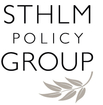Evidence Brief for identifying root causes of conflict Mar 30
Sthlm Policy Group · Comments: 6Sthlm Policy Group and Tana Copenhagen were commissioned by Sida to provide input to strengthen Sida’s peace and conflict work. The task aimed to strengthen Sida’s capacity to commission, develop and make use of conflict analyses.
This Evidence Brief provides an overview of research relating to root causes of conflict and drivers of conflict as well as drivers of peace. It draws from relevant conflict and peace research and other documentation that is publicly available. The Evidence Brief focuses on intrastate conflict and peace, noting that violent conflict within states is more prevalent than conflict between states.
The Evidence Brief draws from research literature on conflict and peace, and interviews senior conflict researchers.They confirm that this consists of diverse opinions about what are root causes and drivers of conflict. But emerging from these interviews and the documentation studied is the conclusion that there exists sufficient evidence to explain various causal factors in conflicts, but they must be considered and analysed carefully in each specific context as their composition and character will differ.
The Evidence Brief summarises the academic discussion about evidence of causality between different conflict factors. It distils and highlights what the peace and conflict research community consider as root causes of conflict and drivers and also drivers of peace. The evidence is set out making reference to various phases of conflict where appropriate. In other words, the brief provides examples of the evidence relating to causes and drivers of violent conflict and peace before, during and after violent conflict. The Evidence Brief makes use of four short case studies exemplifying different causality chains and the factors influencing them (both positive and negative) during different phases of the conflict cycle, namely: situations of submerged tensions and rising tension (Kenya), violent conflict (Somalia), fragile post-conflict situations (South Sudan), and post-conflict with submerged tensions (Bosnia and Herzegovina).

Comments: 6